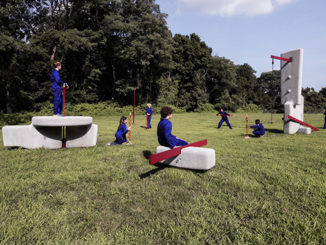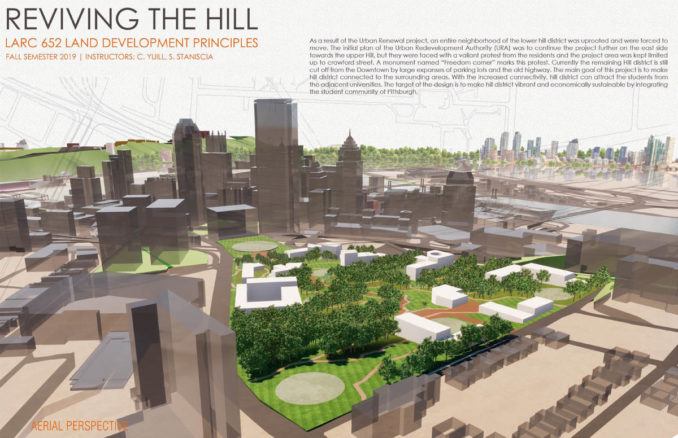
The Hill District is one of Pittsburgh’s oldest residential neighborhoods. It is a significant African American neighborhood in the country famous for its contributions to music (jazz in particular), literature, and sports. During the late 1950s, Urban Redevelopment Authority of Pittsburgh declared the historic Lower Hill blighted and cleared 95 acres of the Hill District neighborhood as part of Pittsburgh’s urban renewal efforts. An entire neighborhood of the lower hill district uprooted and forced to move. The remaining Hill district is still cut off from the Downtown by enormous expanses of parking lots and old highway. The primary goal of this project is to make the Hill District connected to the surrounding areas. To align with the target of making Pittsburgh a biophilic city, urban food forest and community parks proposed to create a green network. The project addresses the existing problems faced by the people living in Hill District and proposes an integrated planning and design strategy that includes housing proposals, improved transportation networks, and street design to revive this once-thriving neighborhood of Pittsburgh.
Historical Context
As part of the City of Pittsburgh’s urban renewal efforts of the late 1950s, the historic African American neighborhood of Lower Hill declared blighted, and 95 acres of the Hill District neighborhood cleared, including 1300 buildings, 413 businesses, and 1600 families (over 8000 people). A new Cultural Center planned which was to include an opera house, playhouse, art gallery, upscale hotel, and apartment buildings. By 1966 the area contained only a new public auditorium (that became known as the Civic Arena), an apartment building, and an apartment/ hotel complex. Significant portions of the land never developed and remained surface parking.
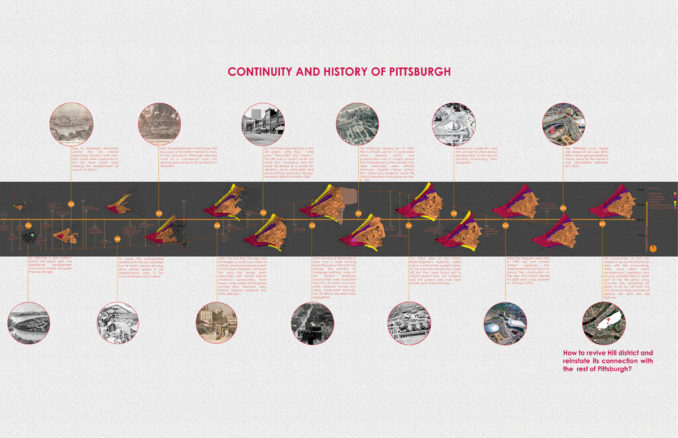
Current Challenges
Interstate 579 opened in 1962 separated the Pittsburgh central business district to the west with the historic Hill District to the east. As a result, the Hill District became isolated and soon once a vibrant neighborhood became degraded. Hill District is a predominately black majority neighborhood. Much of the household are mid to lower-income and works outside Hill District. In recent years, the Hill District has gained a reputation for being an unsafe neighborhood. Because of many vacant lands and dilapidated buildings, crime rates are on higher sides in this area.
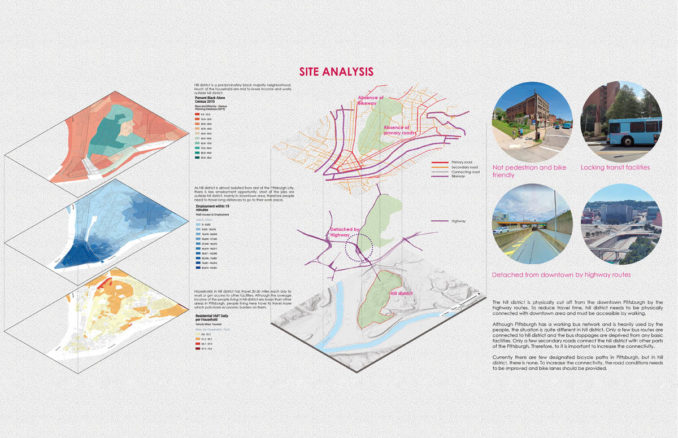
Opportunity
The Hill District is physically cut off from downtown Pittsburgh by the highway routes. To reduce travel time, the Hill District needs to be linked with the downtown area and must be accessible by walking. The proximity to Oakland and the Downtown area can play a crucial role to revive the economy of Hill District. Therefore, it is important to increase connectivity. Although Pittsburgh has a working bus network and is heavily used by the people, the situation is different in the Hill District. Only a few bus routes are connected to Hill District and the bus stoppages are deprived of many basic facilities. Alternative bus routes can be proposed with bus stoppages including sitting facility and shade create a transit-oriented transportation system.
Design Proposal
The project aims to develop a comprehensive design strategy that integrates existing development proposals like the I-579 Cap Urban Connector Project and connects the different parts of the hill to create a unified Hill District. By generating an infill plan to properly utilize the vacant lots in the Hill District, new residential development areas are proposed. As part of Pittsburgh Biophilic Cities Initiative, the project connects the existing green with new urban forest to create a green network with pedestrian walkways and bicycle paths, so people can enjoy increased connectivity to the natural environment.
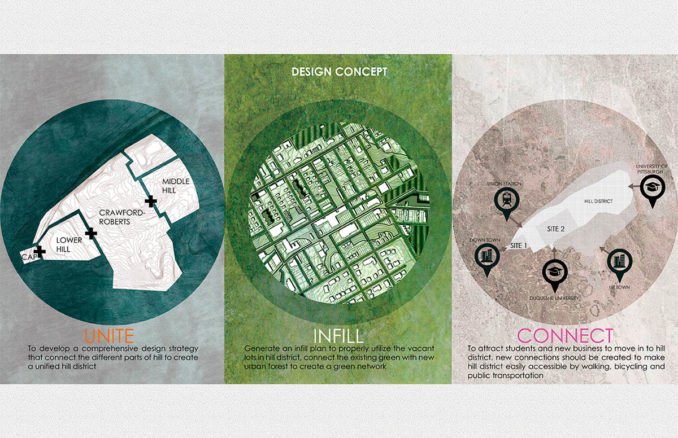
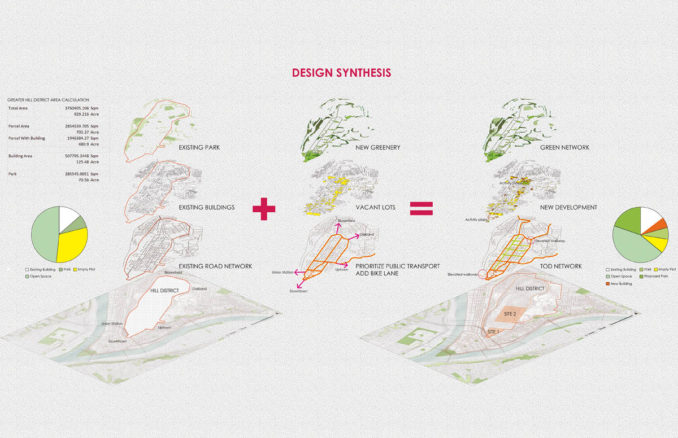
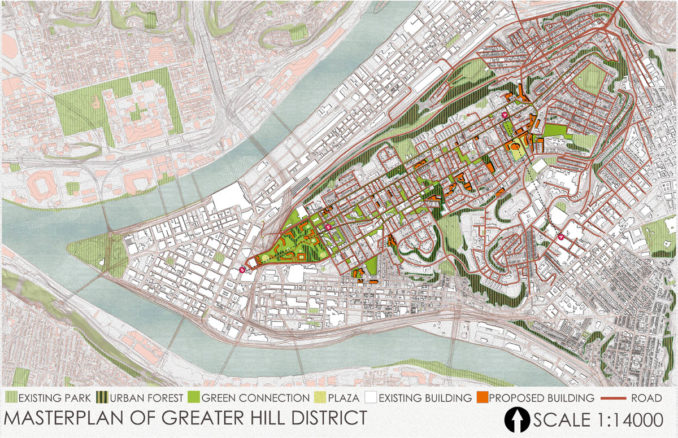
To attract students and new businesses to move into the Hill District, new connections are proposed. The increased connectivity will make hill district easily accessible by walking, bicycling, and public transportation. The design connects the CAP with the lower Hill District by removing the existing vehicular road, which makes the greater Hill District physically connected to downtown Pittsburgh. The development plan comprises the following strategies:
- Create a biophilic community
- Make it walkable
- Create connections
- Make it dense
- Giving choices
To promote urban farming and to encourage small businesses, a pop-up neighborhood market with semi-permanent structures is proposed. Space can accommodate various activities like the farmers market, art exhibitions, annual cultural events, and so on.
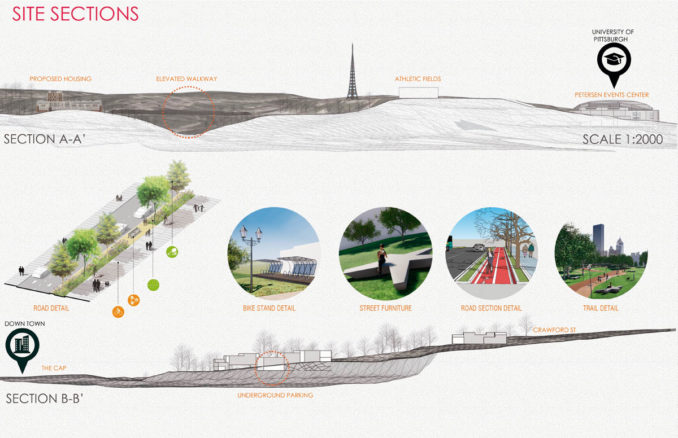
Section B-B’ shows the relationship of proposed buildings in the Lower Hill District with existing topography.
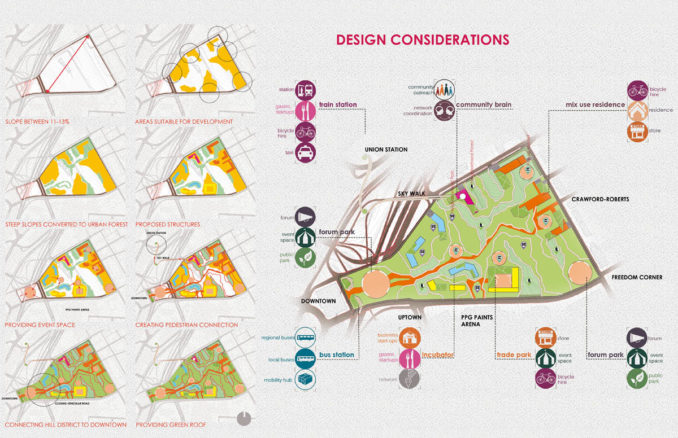
To summarize, the project addresses the existing problems faced by the people living in Hill District and proposes an integrated planning and design strategy that includes housing proposals, improved transportation networks, and street design to revive the once-thriving neighborhood of Pittsburgh, the Hill District.
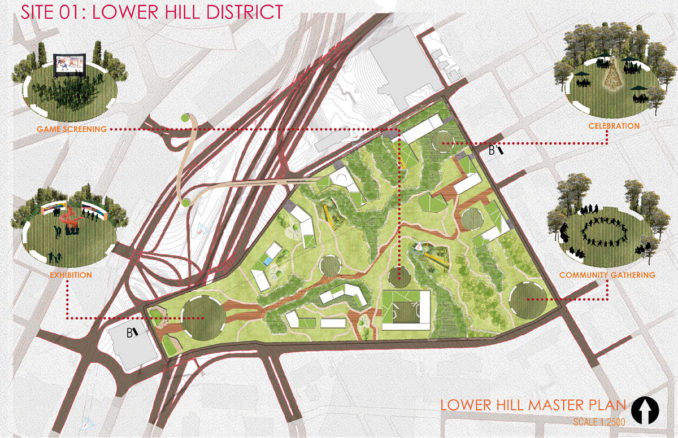
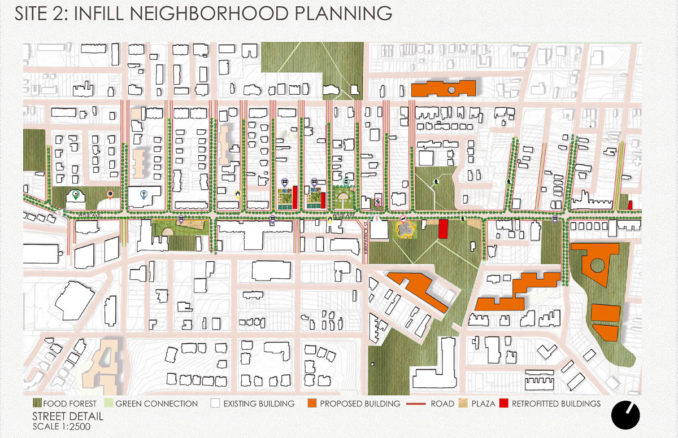
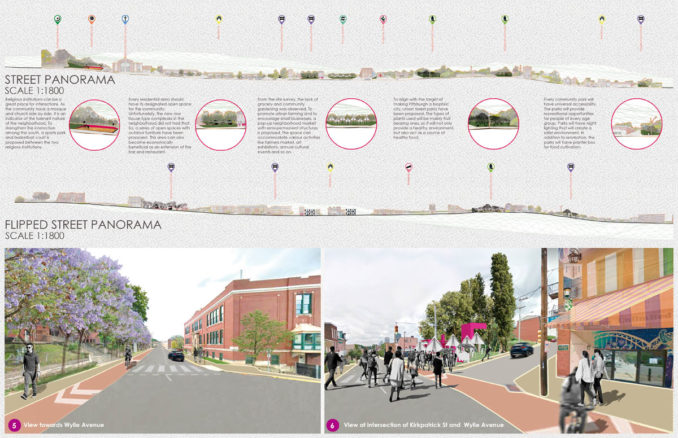
Reviving the Hill
Student: Udday Shankur Datta – Davis College of Agriculture, Natural Resources and Design, West Virginia University
Instructor: Stefania Staniscia, Dr. Shan Jiang
All text and image credit: Udday Shankur Datta
Location: Pittsburgh, Allegheny County, Pennsylvania


